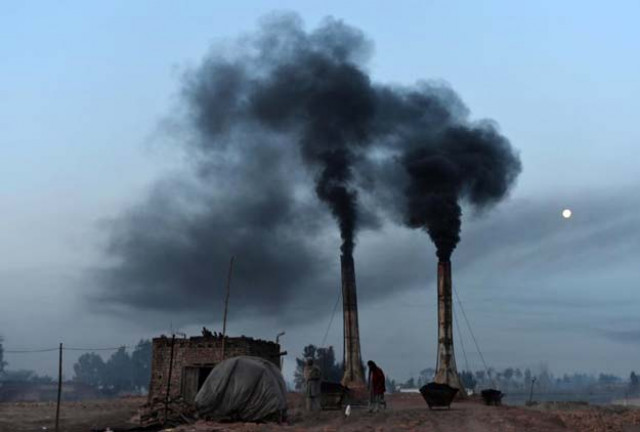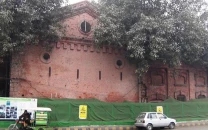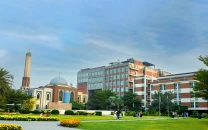Zigzag Kilns: A reprieve for environment and the workforce
Disappearing insect species return, furnace workers report better working conditions and less health risks

Through efforts of various environmental advocacy groups over the years, traditional brick kilns are now widely accepted as an environmental hazard across much of South Asia.
However, the sector’s severe toll on its workforce still remains one of the lesser spoken facets of the long hidden industry.
Pakistan’s recent shift to greener methods like incorporation of zigzag technology, has since brought to surface many harrowing tales of how traditional kilns had been plaguing the lives of kiln workers for decades.
The new technology, workers claim, has been a source of reprieve for them and the environment.
Baba Taj Din, who has been employed in a kiln in Batapur area of Lahore for the past 35 years, recalling his days working in a traditional kiln, said that it was an inescapable nightmare.
“The smoke emitted from the furnaces was ghastly— thick, black and corrosive to touch.
"It would burn through our skin if exposed over long periods and over 70 per cent of workers would develop some kind of a respiratory disease over time,” told Din. “The smoke from the new zigzag kilns is still there, but it’s not toxic or harmful,” he added.
Across much of Punjab, kiln workers are usually accommodated in quarters located in close proximity to the furnace. The thick layers of sooty smoke lining the walls and ceilings of such quarters, speaks volumes about the kiln’s hazardous impact on only workers but also their families.
According to Malik Iftikhar Ahmed, a doctor practicing in the Batapur area, most kiln workers who come to him for diagnosis and treatment, suffer from diseased eyes and damaged respiratory systems.
“Huge amounts of carbon dioxide from the toxic fumes can cause serious side effects, which can over time damage skin, eyes other organs.
Those who’ve worked long periods in traditional kilns often suffer from shortness of breath and asthma,” he informed.
On the other hand, local entomologist Nazneen Sehar, has reasons to believe that toxic furnace smoke has not been damaging to human life, but has also had a dicey impact on the region’s biodiversity.
“It was observed that insects like butterflies, fireflies, and dragonflies were fast disappearing from regions with fuming traditional kilns. But now, with the transfer to zigzag, the smoke has become much less dense and not harmful to these insects. If we are to protect our native species, the government needs to take prompt action against kilns as well as factories still reliant on toxic fuels.”
Speaking in this regard, environmentalist Aleem Butt said that so far only 60 percent of kilns have been shifted to zigzag, and yet many stories of the new technology’s positive impact have come to the fore.
Acknowledging the adverse impact of traditional kilns on kiln worker health, Brick Kiln Owners Association Senior Vice Chairperson Mehar Abdul Haq, also agreed that the shift to zigzag has been particularly beneficial for coal fillers, who had been at the greatest risk.
“Most kilns carry routine medical check-ups of their workers. However, the kiln industry has had to bear severe financial losses during Covid-19.
The government should thus consider waiving sales tax, which would not only encourage the sector but also speed up the transition to zigzag technology,” he told The Express Tribune.



















COMMENTS
Comments are moderated and generally will be posted if they are on-topic and not abusive.
For more information, please see our Comments FAQ